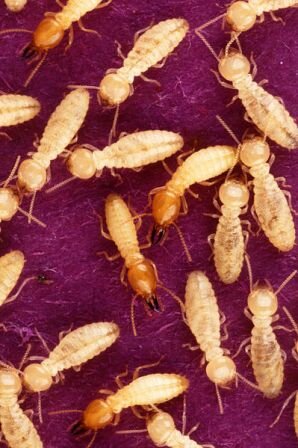One of these following facts about termites might give you much information about what kind of animal termites are. Termites are a group of eusocial insects that, until recently, were classified at the taxonomic rank of order Isoptera, but are now accepted as the infraorder Isoptera, of the cockroach order Blattodea. While termites are commonly known, especially in Australia, as “white ants”, they are for practical purpose unrelated to the ants (although they are prey to some ants, including the acrobat ant). To get to know more information about this animal, here are some facts about termites you might be interested in.
Facts about termites 1: Hymenoptera
Like ants, and some bees and wasps, which are all placed in the separate order Hymenoptera, termites divide labor among castes, produce overlapping generation and take care of young collectively.
Facts about termites 2: Eusocial Insects
As eusocial insects, termites live in colonies that, at maturity, number from several hundred to several million individuals. Termites communicate during a variety of behavioral activities with signals.
Facts about termites 3: Reproductives
At maturity, a primary queen has a great capacity to lay eggs. In some species, the mature queen has a greatly distended abdomen and may produce 20,000 to 30,000 eggs a day. The two mature ovaries may have some 2000 ovarioles each.
Facts about termites 4: Mating
The king grows only slightly larger after initial mating and continues to mate with the queen for life (a termite queen can live for 45 years. This is very different from ant colonies, in which a queen mates once with the male(s) and stores the gametes for life, as the male ants die shortly after mating.
Facts about termites 5: The Winged Caste
The winged (or “alate”) caste, also referred to as the primary reproductive caste, are generally the only termites with well-developed eyes, although workers of some harvesting species do have well-developed compound eyes, and, in other species, soldiers with eyes occasionally appear.
Facts about termites 6: Workers
Worker termites undertake the labors of foraging, food storage, brood and nest maintenance, and some defense duties in certain species. Workers are the main caste in the colony for the digestion of cellulose in food and are the most likely to be found in infested wood.
Facts about termites 7: Soldiers
The soldier caste has anatomical and behavioural specializations, providing strength and armour which are primarily useful against ant attack. The proportion of soldiers within a colony varies both within and among species. Many soldiers have jaws so enlarged, they cannot feed themselves, but instead, like juveniles, are fed by workers.
Facts about termites 8: Nests
Termite workers build and maintain nests which house the colony. These are elaborate structures made using a combination of soil, mud, chewed wood/cellulose, saliva, and faeces. A nest has many functions such as providing a protected living space and water conservation (through controlled condensation).
Facts about termites 9: Agriculture
Termites can be major agricultural pests, particularly in East Africa and North Asia, where crop losses can be severe. Counterbalancing this is the greatly improved water infiltration where termite tunnels in the soil allow rainwater to soak in deeply and help reduce runoff and consequent soil erosion through bioturbation.
Facts about termites 10: Ecology
Ecologically, termites are important in nutrient recycling, habitat creation, soil formation and quality and, particularly the winged reproductives, as food for countless predators. The role of termites in hollowing timbers and thus providing shelter and increased wood surface areas for other creatures is critical for the survival of a large number of timber-inhabiting species.
Hope you would find those termites facts really interesting and useful for your additional reading.










 www.PortlandPayday.Loans
www.PortlandPayday.Loans